Wordstock is Portland’s Festival of Words and I managed to attend this year’s event. I always forget to put it on my calendar and then have too much going, but this year I made it there.
Walking around the exhibit hall, I saw the great scarves with words from famous literature on them.
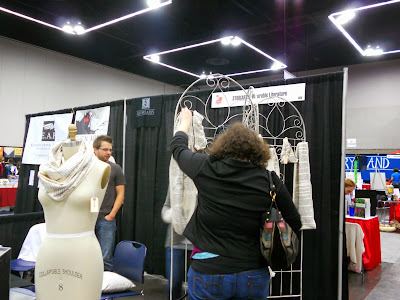
I heard Whitney Otto discuss her new book.
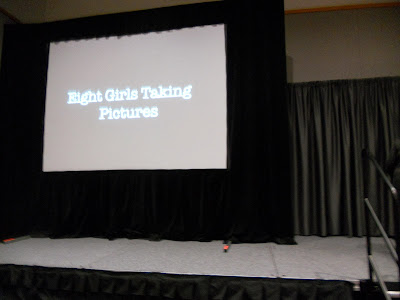
Here she is. Here novel is fictionalized portrayal of different women photographers in the 20th century.
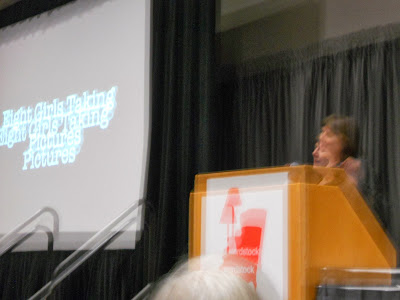
This panel was called “A Songwriter, a Novelist, and Some Poets Walk Into a Bar.” Great title, lousy panel. It started off badly when one of the poets disregarded the question asked, said, “I express myself best through what I write.” She the proceeded to read an endless poem. It must have been four single-spaced pages at least. It went downhill from there.
From my notes: the poet is pretty much confirming the general belief that poetry is inaccessible. She is reading what she wrote and I’m not sure when she started writing this, but it is very long. And it is not accessible. We, in the audience, are lucky as we can process this out of view, but her four panelists are stuck in full view of us and are tasked with keeping a straight face.
Whew. Over.
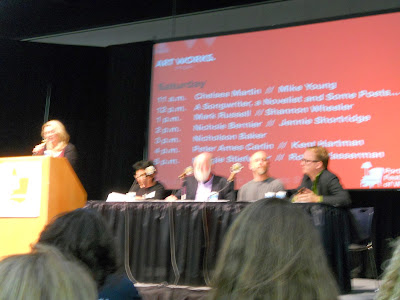
Karen Karbo and Kim Dower told us about Publicity and Publishing Secrets No Author Can Afford to Live Without (and Some Gossip, too!) They were hilarious. I was already a Karen Karbo fan, and I liked Kim Dower so much I bought a book of her poetry.
From my notes:
- Every author needs a one-line description of their book. Then figure out who is interested in it. Then go and find those people.
- When you start a book, put aside a little money every month to promote it. Then you can pay someone to do the promoting things you are uncomfortable doing. Plus, you will have a partner in crime and that will make you feel better.
- Cooperate. Be fun to work with. (This is a Karen Karbo adage I learned years ago)
- Keep a folder of anything in the news that is relevant to your book. When the book is published, these are your connections for promotion.
- You must have a website. On it should be: who you are, what are your credentials (esp. for nonfiction), the cover of your book (if it exists), reviews, anything anyone has said about the book, a way to contact you or your representative, two minutes of you talking about your book–so media people can see you are articulate.
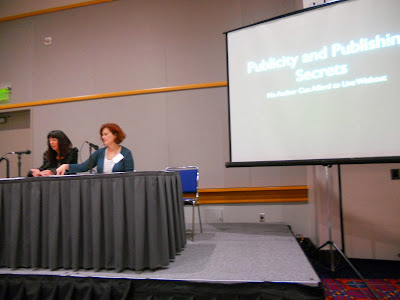
At the “Captivated by Contemporary” I noticed a local author.
Laini Taylor. I’m usually horrible at noticing famous people in my midst, but the hair helps. That’s her in the pink.
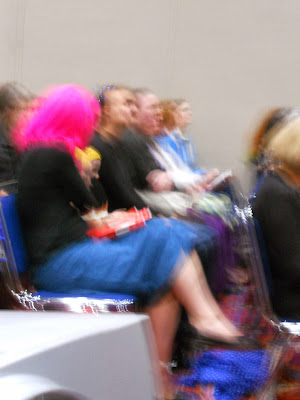
“Captivated by Contemporary” was a great panel full of four YA authors, only one of which I have read, though I quickly remedied that situation. Stephanie Perkins (
Anna and the French Kiss) moderated and I was introduced to Corey Ann Haydu, Miranda Kenneally and Gayle Forman. Remember Gayle Forman’s name. She will come up again soon. Stephanie Perkins was the best moderator of the panels I saw. Her questions were insightful and fun. She was also wearing a fabulous dress and incredibly cute shoes.
Here’s what she did to run such a fabulous panel. She had four clear topics: Parents, Friendships, Love Story vs. Romance, Sex. (“I feel like we’re on a date” Gayle Forman quipped) Those broad categories gave her panelists a lot of room to talk, so good things were said. Then she opened it up for questions.
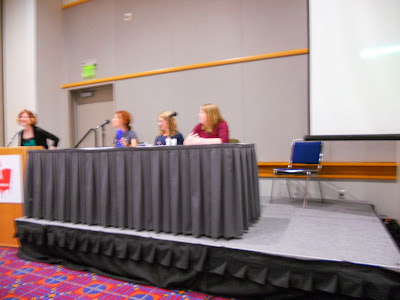
The crew waiting for the “Literature Online: Publishing New Fiction on the Web” panel. “All white dudes.” remarked the white dude on the right.
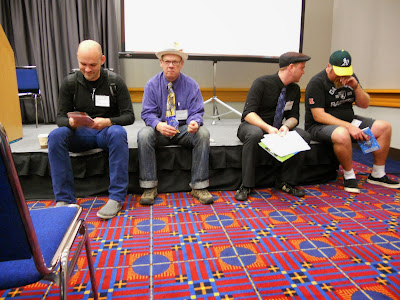
This woman was captivated by the words on the face.
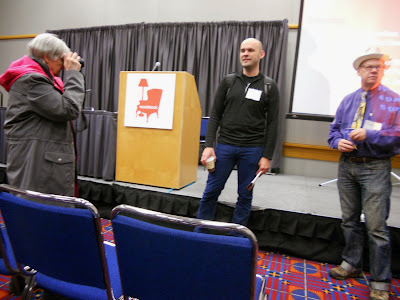
The white dudes in action.
From my notes:
- The thing about online is that you can take tiny steps toward your writing goal.
- One guy used a Google Ad to name his character. He had 10 possible names and a tag line. He then bought 2 hours of Google Ads for each name. After the two hours were up, he was sent a handy graph of which name had the most clicks. I found this to be kind of genius, but he seemed a bit embarrassed by the whole thing.
- During the question section a nuts-and-bolts-type person said, “But where is the literature published online?” And then we got a list. Here’s what I wrote down: Jute, Hobart, Atticus Review, Slope, Front Porch Journal, American Short Fiction, New Pages.com, Review Review, Duotrope Digest. There was also the suggestion to get the collections of modern fiction that are published each year and see where those works were originally published.

I then attended a hideous writing workshop which I paid for, but no need to go into that. Overall, it was a good day.